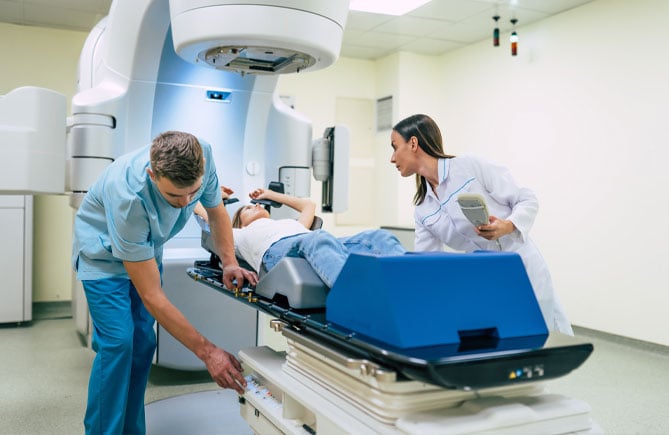Medical Breakthroughs in 2022
From a Pig-to-Human Transplant to a Cure for Cancer – 6 Medical Breakthroughs
Throughout 2020-21, medical research had an obvious priority; the development of a vaccine that could protect populations from Covid 19. Last year saw the resumption of a broader range of research projects, leading to a number of momentous medical breakthroughs in 2022.
As providers of medical market research, the LDA Research team provides qualitative data related to global health technology, medical device manufacturing, primary care, and pharmaceutical products. Often our work takes us into the minutiae of patient behaviour, tech implementation or communications, so it’s both refreshing and inspiring, at the start of a busy new year, to get an overview of the extraordinary research work taking place across healthcare.
- Pig-to-Human Transplant (US)
- Treatment For T-cell Acute Lymphoblastic Leukaemia (UK)
- New Artificial Pancreas Technology for Diabetes Patients (UK)
- Perfusion System Successfully Revives a Dead Pig’s Organs (US)
- Breakthrough in the Treatment of Alzheimer’s (UK)
- Light Therapy Used to Identify and Destroy Cancer Cells (EU)
1. Pig-to-Human Transplant
For over 30 years US researchers have been developing a pig-to-human transplant technique. The aim is to be able to introduce a genetically modified pig’s heart into a human body. Until 2022 the procedure had only been carried out in primates, but in January a 57 year old man agreed to be the first human to undergo xenotransplantation. The transplant was initially considered a success, but the patient lived for only 60 days before his body rejected the new organ.
“There were a number of key steps that will be fundamental to the success of these operations largely centered around genetic manipulation to reduce organ rejection. Solving the problem of rejection may ultimately lead to use of this method to help numerous patients with advanced heart failure.”
2. Treatment For T-cell Acute Lymphoblastic Leukaemia
A relatively new technology, called ‘base editing’ was employed by Great Ormond Street doctors on a 13-year-old patient. Her T-cell acute lymphoblastic leukaemia has resisted chemotherapy and a bone marrow transplant. The experimental approach involves identifying a specific element of her genetic code, and modifying it in order to alter the genetic instructions.
The leukaemia patient is now in remission. Prof Waseem Qasim commented that this form of genetic manipulation was a "very fast-moving area of science", offering doctors and patients the potential for a major breakthrough in a range of diseases.

3. New Artificial Pancreas Technology for Diabetes Patients
People living with type 1 diabetes need to regularly monitor their blood sugar levels in order to reduce the risk of developing complications. An independent NICE committee now recommends the use of ‘hybrid closed loop systems’, a technology that is a further move towards the creation of an artificial pancreas.
“This technology has been proven to give the best control for managing type 1 diabetes and should make things like amputations, blindness, and kidney problems possibly a thing of the past.”
- Professor Partha Kar OBE, National Specialty Advisor for Diabetes at NHS England
4. Perfusion System Successfully Revives a Dead Pig’s Organs
Every day, patients die because of a lack of donor organs. Scientists are working on a perfusion system that could either restore ‘dead’ organs, or extend the life of organs in order to increase donor organ availability.
In 2022 researchers at Yale University used synthetic blood to restore cells and organs in pigs that had been dead for an hour. The technology involved in this process is OrganEx, that stimulates the circulation of oxygen in the dead pig. Cellular functions and limited organ function were identified for up to 6 hours in areas of the pig’s bodies, including the liver, kidneys and heart.
Scientists were quick to say that the pigs were not restored to life, as a result of the experiment, nor were their organs considered usable for transplantation. But the implications are profound:
“Things are not as dead as we previously presumed - we have demonstrated that we can actually initiate cell-repair on a molecular level. We can persuade cells not to die.”
- Dr Zvonimir Vrselja at the Department of Neuroscience, Yale School of Medicine
5. Breakthrough in the Treatment of Alzheimer’s
Alzheimer Research UK has described as ‘momentous’ the research breakthrough that has produced the drug ‘lecanemab’, for use on the early symptoms of Alzheimer’s. Trials carried out in the latter half of 2022 found that the treatment was able to slow down the progressions of memory loss by 27%. Whilst this is no miracle cure, it is able to slow the decline of patients’ capabilities and offer them independent life for longer.
"I'm very excited we're on the cusp of understanding enough to get a hold of the problem and we should have something that will make a bigger difference in a decade or so."
- Professor Spires Jones, Professor of Neurodegeneration at the University of Edinburgh

6. Light Therapy Used to Identify and Destroy Cancer Cells
Research on mice, carried out by the Institute of Cancer Research, London and the Medical University of Silesia, Poland has resulted in the development of a light-activated therapy for use in the detection and treatment of brain cancer (glioblastoma). The photoimmunotherapy provides visibility of even minute cancer cells during surgery and triggers an immune response that can destroy cancer cells remaining once surgery is complete.
“Our study shows that a novel photoimmunotherapy treatment using a combination of a fluorescent marker, ‘affibody’ protein and near-infrared light can both identify and treat leftover glioblastoma cells in mice. In the future, we hope this approach can be used to treat human glioblastoma and potentially other cancers too.”
- Study Leader, Dr Gabriela Kramer-Marek
What Medical Breakthroughs Should We Look Out For in 2023?
We won’t be bioprinting human organs for transplant in 2023, but the technology required to enable it is likely to edge ever closer. Bioprinting uses technologies from 3D-printing , to assemble materials in order to produce artificial organs, made up of living cells. The challenge currently being grappled with by researchers is getting the organ to function like its human counterpart, within the body.
Another eye-catching development is ‘personalised medicine’. Rather than being diagnosed and receiving a generic treatment for a particular condition, personalised medicine uses a range of factors – lifestyle, genetics, medicine, clinical – to determine the best possible treatment; one which combines maximum effect, and minimum side effects. Personalised medicine is already available for some conditions and its application is being monitored.
Working With LDA Research
The LDA Research team has more than 10 years’ experience recruiting participants globally for medical market research projects. We employ a range of research methodologies, and clients are able to mix-and-match the ones that are appropriate to their needs.
We have dedicated healthcare panels in the UK, US, Canada and Australia, and have developed an extensive network of partners with international panels. Currently our field partners span Europe, the US, Canada, South America, South Korea, China, Mexico, Japan, the Middle East, and the South Pacific.
Would you like to talk to a member of the LDA Research team about working with us? Call us today on 01525 861436



